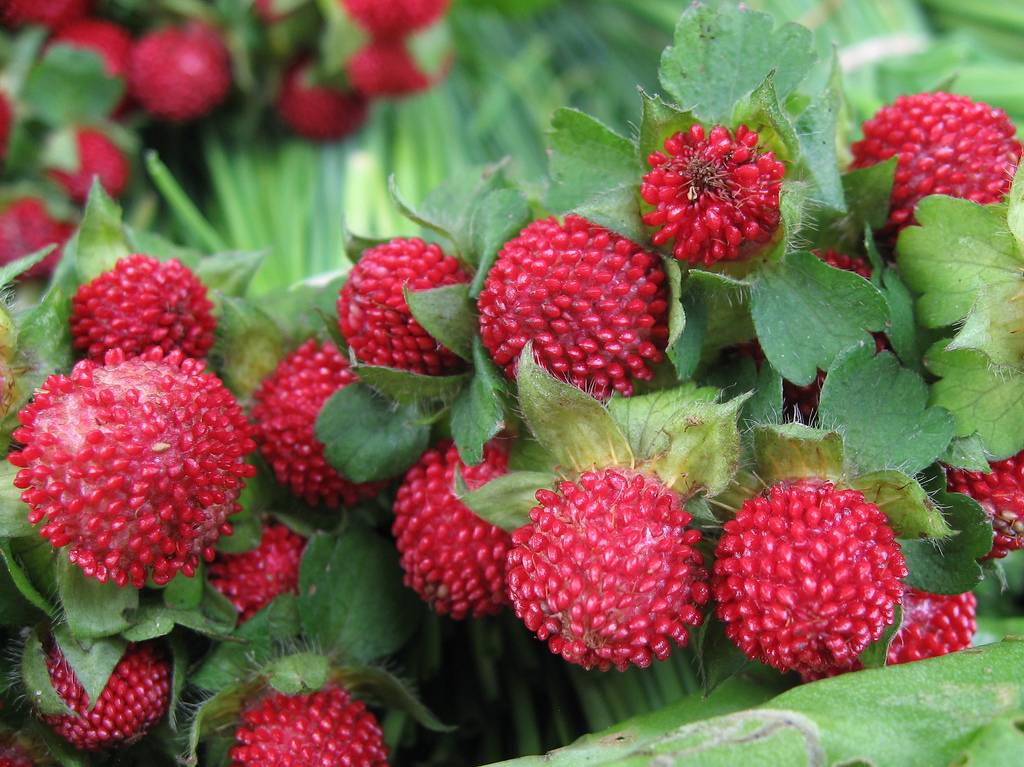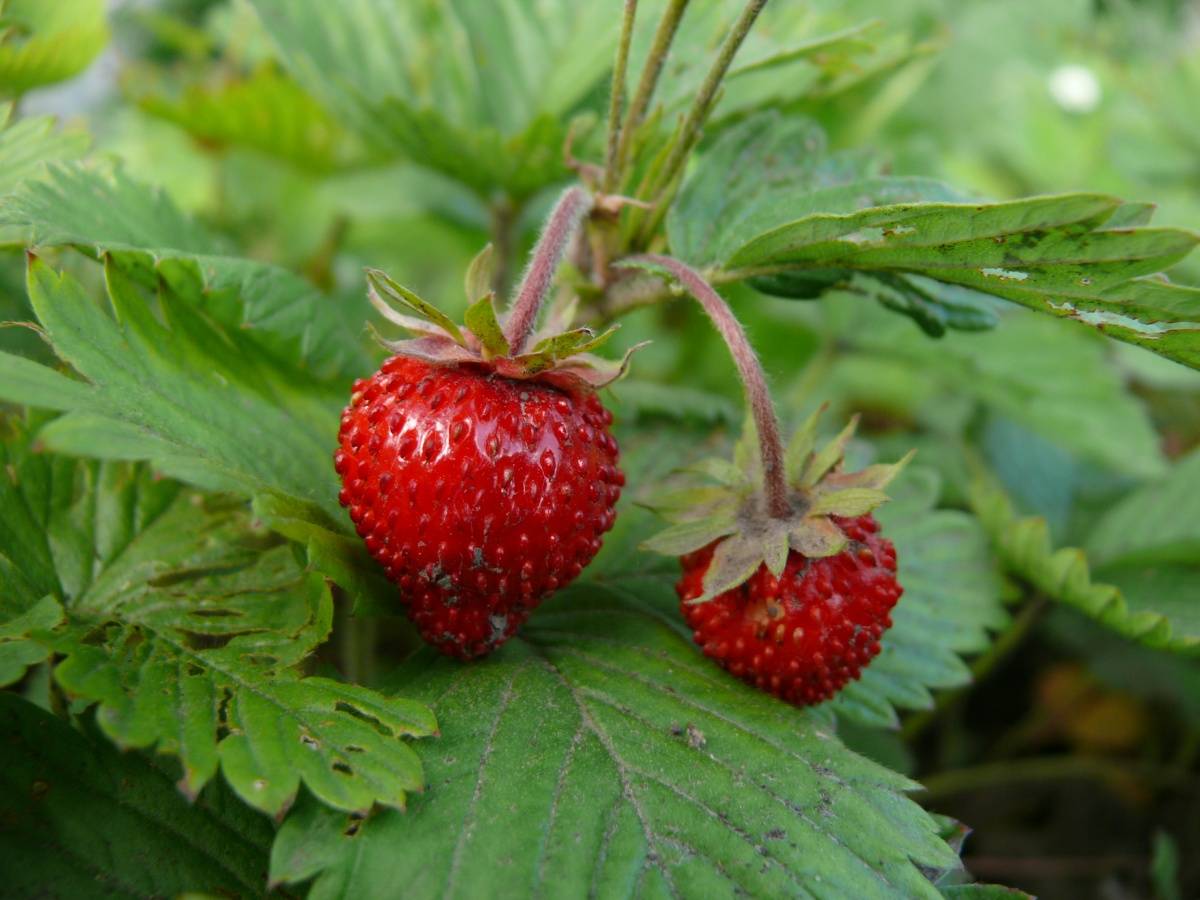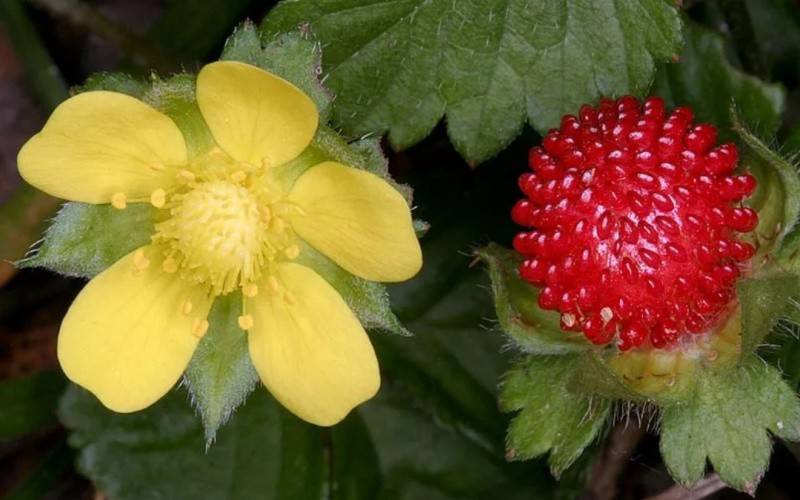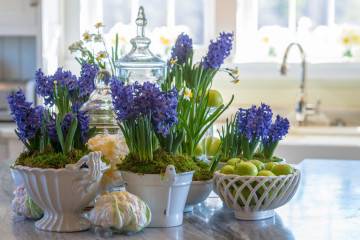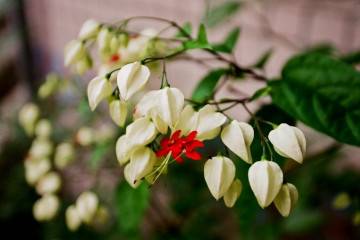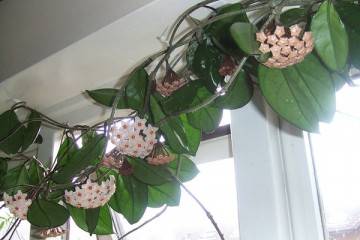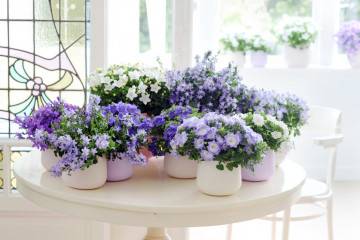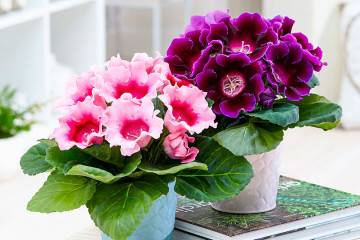Dusheney Indian - home care
Content:
Duchenea Indiskaya is an ornamental plant grown in the open field. Outwardly, the resemblance to strawberries is obvious, especially during the period of fruit formation. Has a second name - Indian Potentilla. The plant is grown for decorative purposes, used in design compositions as part of the decoration of balconies and verandas.
What does Indian dusheney look like?
Ducheney is a plant that, like garden strawberries, belongs to the Pink family, but its genus is different - Cinquefoil. Despite the external similarity, these are 2 different species. Its natural habitat is in the countries of Asia, where it has long been used to treat diseases.
In Europe, ducheneu appeared only in the 19th century.
Description of the species:
- life form - herbaceous perennial;
- creeping stems, covered with villi, shoots extending from them can reach lengths of up to 50 cm;
- the stems also have trifoliate separated (like garden strawberries) green leaves;
- flowers are small, up to 1.5 cm, located singly, cream or light yellow shades;
- flowering begins in early summer and does not end throughout the season;
- the fruits are identical to those of strawberries - round, red berries, completely covered with small seeds.
The main difference between the fruits is that the strawberry berries are tilted downward, while the duchenea lifts its fruits upward.
In most countries, this plant is considered a weed, but in Russia it serves as a decoration for flower beds.
Common varieties
The most common varieties of ducheneuil are:
- Ornamental strawberry ducheney (false) - very similar to the original berry. The difference is only in the flowers, which are white in garden and forest strawberries, and cream or yellow in duchenei. Another difference is the direction in which the berries grow. Many are worried about the question of whether the Indian dusheney is edible or not. The answer is yes. The berries can be eaten, but there will be no taste sensations, they are simply tasteless. At the same time, Duchenei is a fairly strong allergen, which is contraindicated for children, pregnant women, asthmatics and allergy sufferers.
- Indian dusheney Tutti-Frutti is also a common ornamental variety. It is grown for the purpose of covering the soil with a bright, beautiful carpet, or as an ampelous plant. This variety is very unpretentious to environmental conditions and survives in almost all climatic zones of Russia.
- The Indian duchenea Rosita is an excellent ground cover variety. Bright red berries and yellow flowers look spectacular throughout the summer season. Flowering and fruiting do not stop for a long time. You can grow Indian strawberries both outdoors and in hanging pots. However, when grown at home, it will have to be constantly replanted due to its ultra-high growth rate.
Features of caring for a plant at home
Both in the summer cottage and at home, the dyusheney flower requires minimal maintenance, which will greatly delight especially busy flower growers. It's easy to grow her, and even easier to care for.
- Temperature
The flower can grow everywhere, but active flowering and fruiting is possible only at a temperature of about +25 ° C.
For only the green mass to develop, +18 ° C is enough.
- Lighting
Lighting can be absolutely anything, but light shading will be required from bright sunlight.
In too shaded conditions, the growth and development of the duchenei will stop, therefore, in everything, the golden mean must be observed.
- Watering
The soil should be slightly damp, so it is recommended to water as needed.
It is important that this plant will also endure the period of drought, it will wither a little, but after the next watering it will again recover and gain strength.
- Spraying
Spraying may only be required in dry, hot weather. It is sometimes helpful to have a refreshing shower.
- Humidity
Air humidity should be moderate, this is the best option. So that the soil does not dry out from above, it is mulched with a layer of moist moss.
- Priming
A universal soil mixture for indoor plants is suitable as a soil. You will have to put some drainage at the bottom of the pot.
If there is a need to compose the soil yourself, then you need to mix 50% of leafy soil with 25% turf and 25% sand.
- Top dressing
Ducheney does not require unnecessary fertilization. Liquid mineral complex can be added at the end of March. At this time, the active growing season begins.
Features of winter care
In winter, it is worth giving the plant a little rest, stop feeding, water less often.
You should not wait for flowering in winter, since the daylight hours are too short.
It is not worth trimming the entire bush; cosmetic pruning is enough to remove dried flowers, stems, leaves, berries.
When and how it blooms
Flowering begins in early June and lasts until mid-September. In good conditions, it is plentiful and looks very impressive. And when still bright red berries appear, against the background of green leaves, the impression is simply indelible.
The flowers are small, simple, five-petal, yellow or cream shades.
Plant pruning
At home, this plant is grown mainly as an ampelous plant, and with the help of pruning, it can be given absolutely any shape. In addition, after the procedure, the bush will be renewed and will grow even more intensively.
How does Indian dusheney reproduce?
Reproduction takes place in two ways: seed and vegetative. This is a rare case in indoor floriculture, when both methods are equally productive and bring quick, positive results.
Step-by-step instructions for propagating Indian dusheney seeds:
- Seeds are sown in prepared moist soil. Seedling boxes can be used as a first planting site.
- Containers with seedlings are covered with plastic wrap or glass to create a mini-greenhouse.
- The time for the procedure is early spring. Over the summer, the plant grows beautifully and will actively bloom and bear fruit. Self-seeding is also great for plant propagation.
The second way of reproduction is vegetative. On the long, creeping stems of the mother plant, many young bushes are formed with a basal rosette and small roots. They separate from the adult plant and take root as soon as they are planted in the ground. It is possible to propagate ducheneu strawberries in this way during the transplantation process.
Transfer
The transplant is carried out as the Indian dushenei grows.And it grows pretty quickly.
For the procedure, you will need a new flowerpot, 3-4 cm superior to the previous one. Before transplanting, you need to slightly dry the soil, after which the earthen lump will easily fall out of the pot, and the roots will not suffer.
Pests and diseases
The flower grows quite densely, so diseases and pests are not always immediately noticeable. Periodically it is worth inspecting to make sure they are not there.
All kinds of spotting can appear on the leaves; aphids, spider mites and scale insects have been chosen by the ducheneus. These insects are almost omnivorous. You can fight them with insecticides purchased at a specialized store.
If you provide this variety of Potentilla with proper care, then there will be no problems in growing. The main thing is to do everything on time.
Duchenea Indian is an amazing plant that even the most inexperienced indoor plant lover will grow without problems. Absolutely all stages - breeding, growing, transplanting, care features, are elementary. This is one of the most unpretentious plants that you just need to take and plant. The flower will decorate both the personal plot and verandas, winter gardens, balconies, apartment windows. There is always a place for him in any home.

